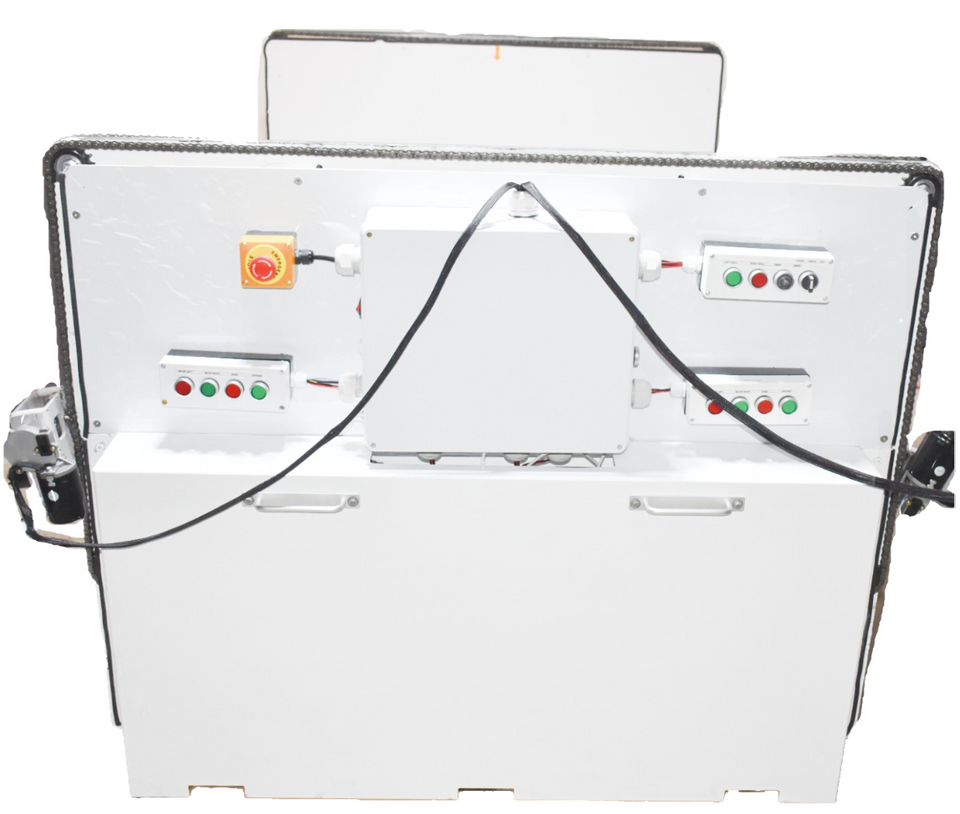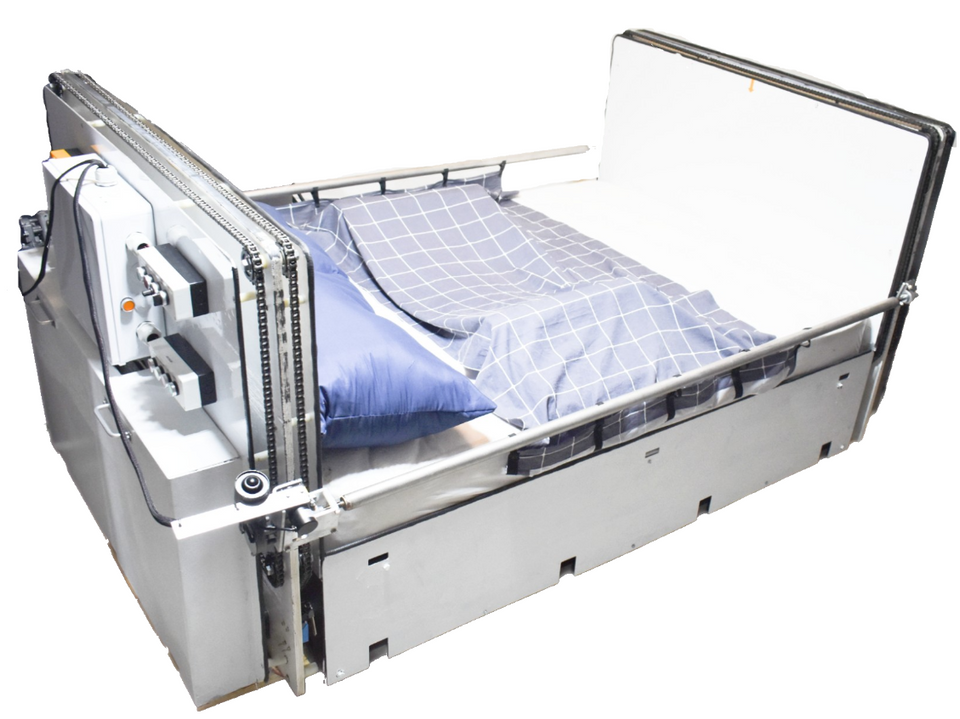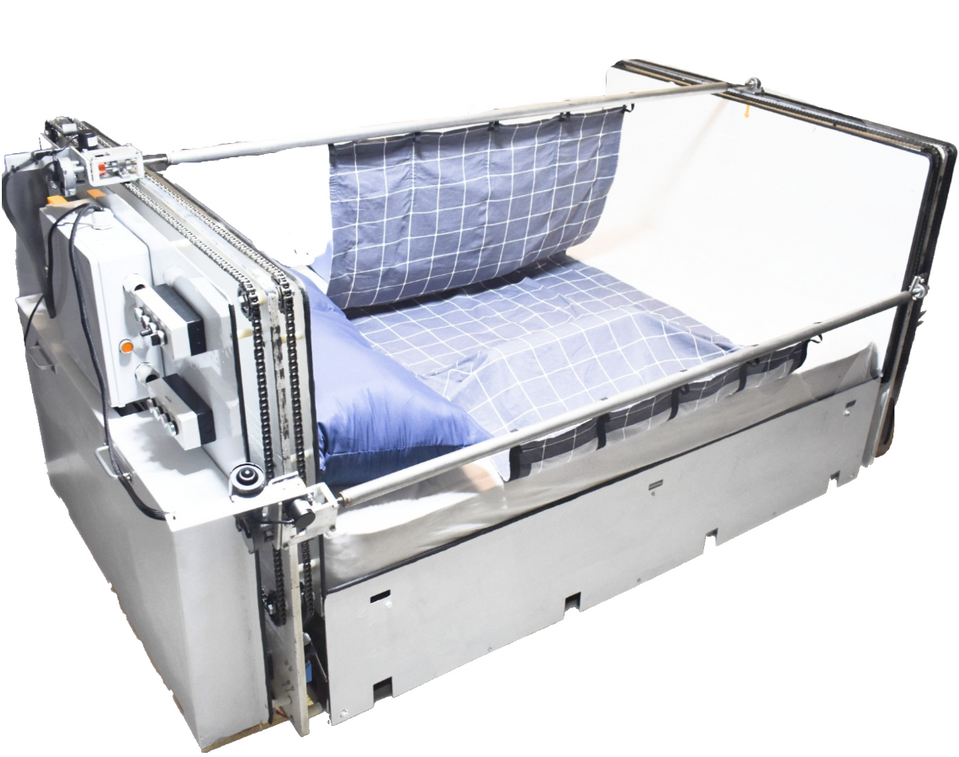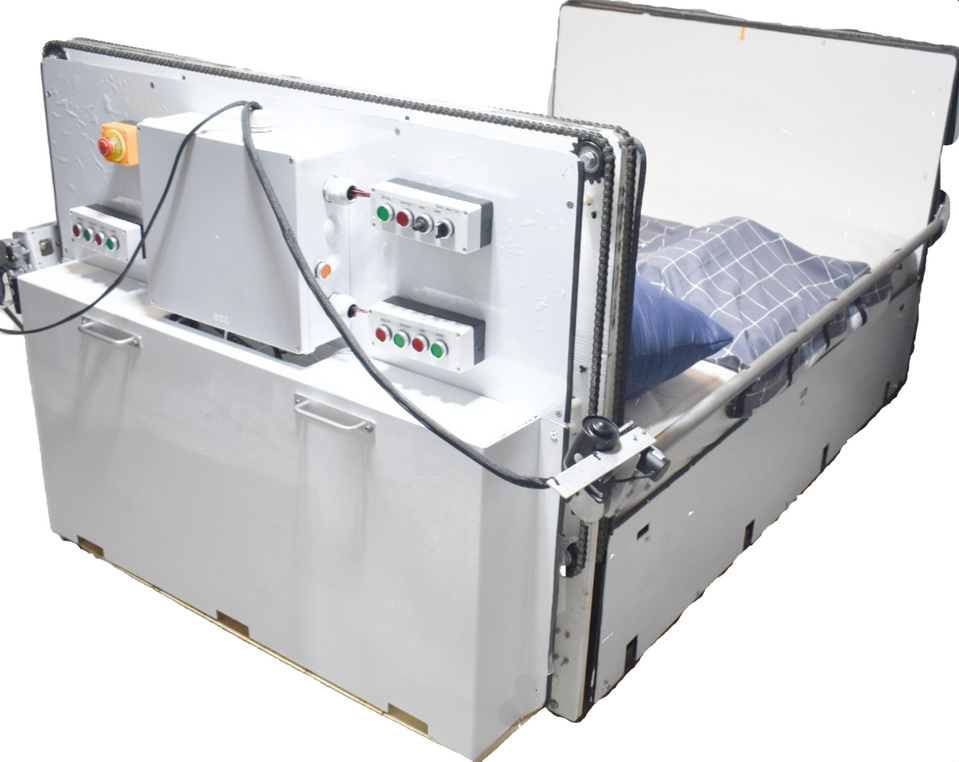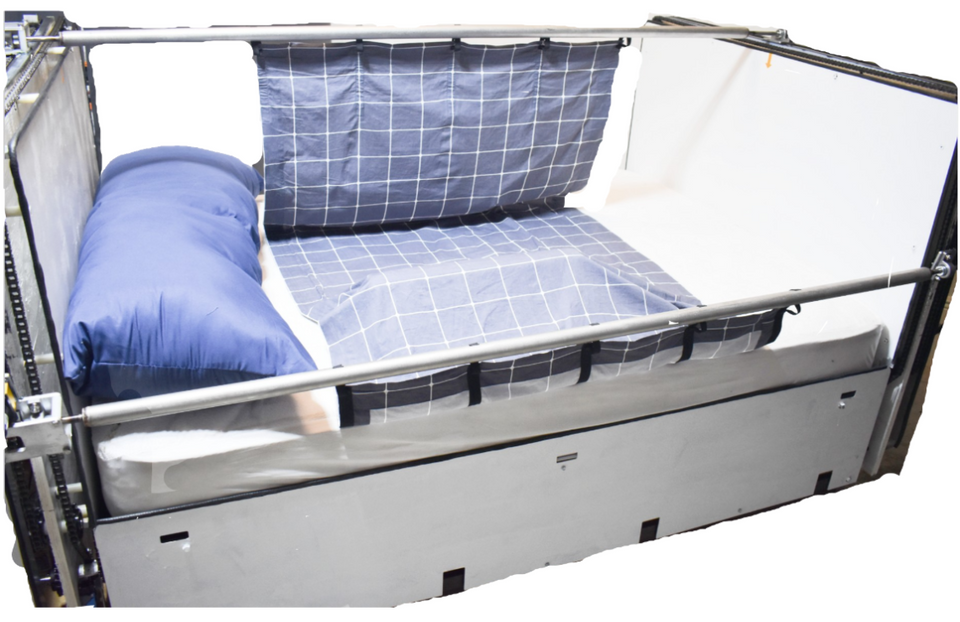Patient Rotation Bed
See you no more, bedsore!
Save the world, one life at a time
First automated rotation bed to turn patient 90°
First rotation bed to use regular soft mattress
Patent Granted in US

Our product
Wicastle has created a functional way to care for the immobilized individual. Wicastle rotation bed is a unique, computer-controlled, therapy system that manually or automatically turns the bed-user to different stable sleeping positions without the aid of caregivers or institutional staff. The bed closely mimics the body's natural nocturnal motion by mechanically repositioning it in order to re-establish blood flow to compressed tissue and thus prevent the formation of life-threatening bedsores and other complications of immobility. The motion is timed (rather than random) when under computer control and the rate is adjustable to fit individual need.
How does Wicastle Rotation Bed work?
Advantages
Patient can use the standard regular soft mattress to have a home cozy feeling
Patient lies on a horizontal mattress surface with all positions
Patient lands on the torso instead of arm in each turn
Full 90° turn to relief all pressure on the free body surface
Full body position change instead of just reducing skin pressure
Automatic Operation
A key feature of Wicastle rotation bed is its ease of operation. User-friendly control panels allow caregivers to easily program the bed for automatic use or to adjust any of the bed’s operations manually. Changing the operation of the bed from automatic to manual or from manual to automatic is a one-step procedure.
The bed allows the user to be smoothly and quietly turned through a 90° range of rotation - from the horizontal position to up to 90° left and 90° right. Rotation can be programmed to stop at any position to meet the specific comfort and positioning requirements of the user. Additionally it allows the bed to “dwell” at the programmed position (left, back or right) for any period of time between 10 minutes and a maximum of 30 minutes.
A typical turning schedule might be as follows: Horizontal for 20 minutes, then 90° right for 20 minutes, then horizontal for 20 minutes, then 90° left for 20 minutes.
The program will automatically repeat with the next move being back to horizontal.
The ANGLES and TIMES should be determined through consultation with the user’s caregiver and doctor and are influenced by a number of factors including user’s size, weight, skin condition and comfort levels and also by the primary reason for which the user requires turning (e.g. avoiding bedsores or improving respiration).
Applicable Medical Conditions
Click this link to learn Bed Sore Cause and Symptoms
Wicastle Rotation Bed is recommended for persons suffering from temporary or permanent immobility. This could include:
Spinal cord injuries causing paraplegia and quadriplegia (with or without ventilator)
Muscular dystrophy and multiple sclerosis
Severe head injuries and stroke
Severe respiratory ailments such as chronic obstructive pulmonary disease
Immobility due to aging
Cancer
Guillain Barre Syndrome
AIDS
Coma
Amputations
Osteomyelitis
Degenerative disk disease, post-spinal fusion and laminectomy
Rheumatoid Arthritis
ALS
Any other condition where turning assistance is required
A mobile person generally turns approximately once every 10-12 minutes while sleeping. This action provides for healthy blood circulation, stimulation of body organs and movement of body fluids. When a person becomes temporarily or permanently immobilized however, the blood supply to that part of the body that is under pressure is restricted. If that pressure is not regularly relieved, and the blood supply restored, the affected tissue dies and sloughs off resulting in the formation of a bed sore/decubitus ulcer. These occur most commonly on the buttocks, sacrum, hips and heels and can be life-threatening if they become infected. This is commonly referred to as a Pressure Injury.
If that isn’t bad enough there are many other medical complications associated with immobility. These include (but are not limited to):
Pneumonia
Venous stasis
Thrombosis
Embolism
Stone formation
Urinary tract infection (kidney and bladder)
Muscle wasting
Bone demineralization
Atelectasis
Decubitus Ulcers (or Bedsores)
Decubitus ulcers are of major concern to the sufferers, their caregivers, and the medical community. The scale of the problem is immense. It is estimated that approximately 1.2 million people are suffering from bedsores at any one time in the United States alone and almost 70% of sufferers are over 65. It is reported that there are 60,000 deaths annually from complications arising from bedsores and the current cost to the US Health Care System to treat these and other associated conditions is estimated at anywhere from US$15 - $40 billion annually.
Traditional Methods of Prevention
The traditional way to avoid the formation of bedsores is for a family member, caregiver or institutional employee to regularly turn (reposition) and stabilize the patient in a new position to relieve tissue compression and re-establish blood flow. (It is recommended that this be done at a minimum of every two hours). This has to be done around the clock and unfortunately this manual process has a considerable number of drawbacks that include:
The immobilized patient is woken up during the night by the turning process
Caregivers, family members or institutional staff can suffer severe back damage from the effort of lifting
Family members need to be in attendance 24 hours per day and this can lead to severe sleep deprivation and severe emotional stress
In institutional settings the need to frequently turn immobilized patients is costly both financially and in terms of employee time
The patient may be in a home environment where the family members are unable to physically provide the necessary regular turning
If support is not available at home then patients may have to be relocated to a facility leading to a loss of privacy, dignity and the inability to create a life apart from institutional living.
Place Order
Please read General Arrangement Drawings and User Manual before filling out purchase order
Purchase Order and Warranty
Please download, sign and send this document to sales@wicastlellc.com to place the order
We are looking for global and US distributors and service/repair partners
Please visit PLACE ORDER page on this website to place an order. You may also email us directly to sales@wicastlellc.com
2401 NW 5th Ave,Miami, FL, 33127
1-310-869-8358

